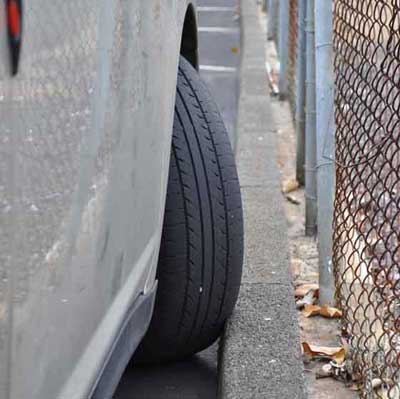Minor driving faults

As a learner, you are allowed upto 15 minor driving faults. If you make 16 or more minor faults during your practical driving test, then you will fail.

Sometimes minor driving faults can turn into serious driving faults if other road users are affected but that depends on the prevailing conditions at the time of the test. On the other hand, dangerous driving faults will only be marked down if either the driving examiner or other road users have been forced to take evasive action to avoid danger. If you commit either a serious or a dangerous fault during your practical test, you will automatically fail no matter how good your driving was on the whole.
Without further ado, here's a list of the most common driving test minors:
Starting the engine
Some learner drivers start the engine in gear instead of neutral and this causes the vehicle to jump forward while others do not apply the handbrake properly and this sometimes causes the vehicle to roll backwards or forward.
Moving away
It is very important to perform overall observations before moving away to ensure it is safe for you to proceed. Not looking around is considered a minor fault which could potentially become a serious one if you have moved away when it was unsafe to do so.
Emergency stop
When stopping the vehicle in an emergency, you need to do so promptly and fast. Using both the clutch and the foot brake is a mistake committed by a lot of learners. The examiner wants to see you keep control and not skid the vehicle while attempting to stop in the least time possible.
Turn in the road
When doing a turn in the road, learners fail to do all round observations to make sure it is safe to move the vehicle. If you are unable to complete the manoeuvre within 5 moves or touch the kerb during the exercise, it will be considered as a minor driving fault.
Reverse parking
The vehicle should not be too far from the left hand kerb or parked at an angle to the kerb after completing a reverse park. It is also important to look out of the rear window while reversing and pay attention to pedestrians when performing this manoeuvre.
Left / Right reverse
On completion of a left or right reverse, the vehicle should be parallel to the kerb and not too far from it. Touching the kerb or going over the centre of the side road or mounting the pavement will be considered a driving test minor.
Ancillary controls
It is important to operate the wipers if it is raining and if the windscreen is getting blurry. Also the lights on the vehicle should be switched on if it starts to get dark otherwise it could be marked down on your driving test report.
Awareness
Showing an overall awareness of what is happening around you while driving is what the driving examiner is looking for. You should always stay alert and look out for hazards like pedestrians crossing the road unexpectedly. The purpose of practical driving test is to try and ascertain how well you react to other road users, for example, whether you give way when required, whether you are telling other road users what you are doing through proper signalling or whether you understand and interpret correctly road markings and signals given to you by other drivers.
The verdict
A minor fault is any silly little mistake you commit during your practical test where the driving examiner thought was not up to the standard and could be subsequently improved. These mistakes are easily overcome if you practice driving regularly on different types of road, eg dual carriageways, roundabouts etc, and also at different times during the day (morning/evening or when it's bright/dark or during high traffic/low traffic).
If you have any questions, please feel free to leave a comment below and we'll try to help you.
9 Replies
When turning the road, touching the kerb with the front wheel, depending on the force, is considered a minor/serious fault. Touching the back wheel on the kerb lightly would be a fault "not suitable of noting", but if it was clearly noticeable, it is considered a minor fault. All of this is according to my driving instructor.
Touching the kerb may lead to a fail but is in no way a certain fail and is often marked as a 'minor' or 'driver error'. There are many factors taken into account - was it threatening to a pedestrian ? Was it slow and merely a miss-judgement or a hard 'out of control'. Was it corrected suitably and in safety or did the driver just keep going ? The words the examiner uses on TITR are 'Try not to touch the kerb'. If touching was an immediate fail the wording would be more like 'You must not touch the kerb'. The DSA are extremely careful with the way they word things. Steev Stamford DSA ADI (Car & Fleet)
Touching the kerb, even when turning in the road is a FAIL.
You will not fail for stalling the car once but if you do this repeatedly, then it will be considered as a serious fault and you will fail. Remember that if you collect more than 3 minors within the same category (The Driving Test Report is divided into categories, eg Control category which tests your ability to use the clutch, gear, accelerator, footbrake, parking brake etc), you will not pass your test.
This is not and has never been true.
3 faults in one category means a driving instructor can fail you if he/she chooses.
I know this for a fact because I personally received 4 minors in the "appropriate speed" category and still passed. My tester then explained that the 3 minors is a very common but false myth.
Similar topics for you











